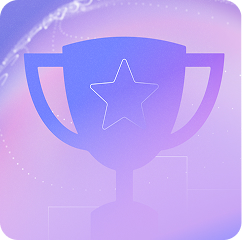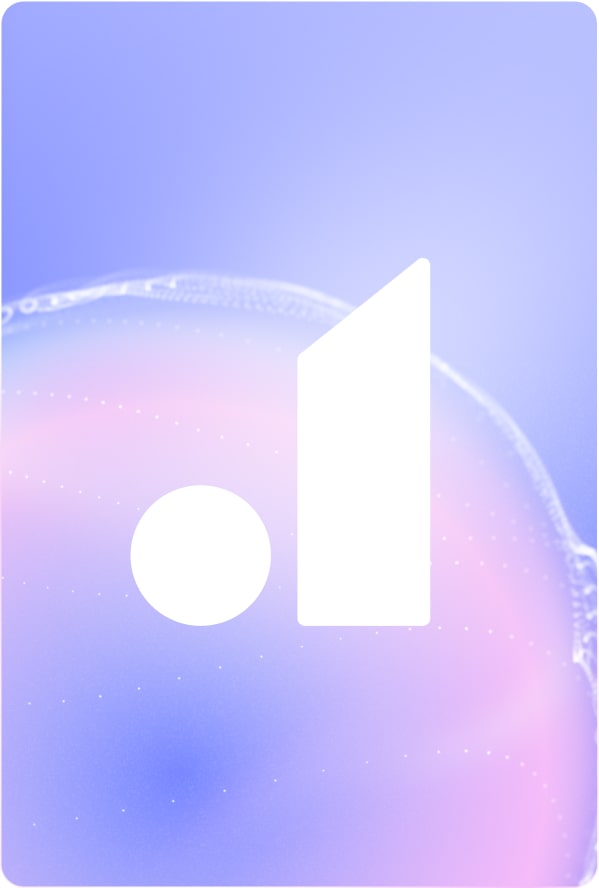
// Recruitment Technology
Is Your ATS Software Helping Your Agency Place More, or Holding It Back?
23/07/2025
12 MIN
Most recruitment agencies rely on an applicant tracking system (ATS) to keep their processes organised. But in many cases, that same system is also quietly holding them back. And according to DemandSage, 87% of companies now use AI-driven tools, with 65% of recruiters having implemented AI to save time, improve candidate sourcing, and reduce hiring costs.
Outdated ATS platforms often require more manual work than they eliminate from the hiring process. Recruiters are forced to grapple with hiring challenges, re-enter data, switch between tools, and adapt their workflow to rigid system constraints. Instead of helping consultants tackle candidate relationship management faster, these systems become bottlenecks that drain productivity and delay placements.
This is where the real ATS automation benefits become clear. A modern, AI-powered ATS should not only track activity but actively reduce repetitive tasks, streamline workflows, and help recruiters focus on candidate engagement and client delivery.
In a market where speed and experience are competitive advantages, the technology supporting your recruiters must enable performance, not hinder it. Today’s platforms can surface matched candidates, automate outreach, generate summaries, and guide recruiters through every stage of the process without the manual overhead.
In this article, we’ll explore whether your current applicant tracking software is delivering meaningful value or slowing your team down. We’ll look at:
- What your ATS should be doing for you in 2025
- Clear signs that your system is no longer fit for purpose
- What modern, AI-powered platforms look like in practice
- Five essential features your next ATS must include
- How to make a smooth transition without disrupting delivery
If your current ATS feels more like a burden than a tool, it may be time to consider what a modern system could unlock and the automation benefits it should be delivering.
What’s the real job of your applicant tracking system in 2025?
Historically, ATS systems were built as digital filing cabinets for recruiting agencies. Their primary role was to ensure data on potential candidates was recorded and that recruiting process compliance boxes were ticked. Today, that is no longer enough.
A modern applicant tracking software must go beyond storing recruitment process information. It should help recruiters work faster, smarter, and with more precision. The goal is not just operational visibility, but performance support throughout their hiring workflows.
In 2025, your ATS should actively contribute to placement success. That means handling resume parsing, reducing admin, surfacing insights, tracking applicants, and guiding recruiters through their workflow with minimal friction. It should serve as a system of productivity, not just a place to store notes.
For agency recruiters operating in fast-paced, competitive markets, automating routine tasks is critical for surfacing prospective candidates. Your ATS should assist in real time by:
- Recommending qualified candidates based on live job briefs
- Highlighting gaps in candidate records before submission
- Prompting timely follow-ups and candidate comms
- Providing instant access to reporting and team activity metrics
An ATS that only logs actions after the fact is no longer fit for purpose. The systems that drive results today are the ones that actively support delivery, remove repetitive work, and improve speed to placement.
If your ATS is not helping your team place more roles, reduce admin, or improve decision-making, then it is time to re-evaluate its role in your business. Discover everything Atlas can do for your recruitment agency >>
Signs your ATS is actually slowing you down
Many recruitment agencies continue using legacy ATS platforms simply because they are already in place. But the signs of an underperforming system are often hiding in plain sight. When an ATS no longer enhances delivery, it starts to introduce friction, reduce recruiter output, and erode overall productivity.
Here are the most common warning signs:
1. Excessive manual data entry
If recruiters are spending time copying and pasting candidate information, logging emails, or manually updating statuses, the system is failing to automate where it should.
2. Low recruiter adoption
If your team avoids using the applicant tracking system (ATS) or relies on spreadsheets, email inboxes, or shadow systems to manage workflow, this suggests the platform is not aligned with how recruiters work.
3. Workflow duplication and inefficiencies
Using multiple tools to manage the same process, or having to perform the same task in two different systems, is a clear sign of integration issues or poor platform design.
4. Poor candidate and client visibility
When information is scattered in various notes, spreadsheets, and job boards, or is difficult to retrieve quickly, it slows down response time and undermines the recruiter’s ability to provide value to clients and candidates.
5. Limited or outdated reporting
If your ATS cannot produce timely, actionable insights about performance, pipeline health, or other hiring needs, it is limiting your ability to lead and improve delivery.
Each of these issues translates into lost time, reduced placement velocity, and a higher likelihood of human error. When multiplied across a team or office, the impact is significant.
An ATS should accelerate performance, not force workarounds. If your team is spending more time working around the system than working through it, that is a strong signal to reassess your current setup.
What does a modern, AI-powered ATS look like?
Modern recruitment is fast-paced, high-volume, and relationship-driven. To support this reality, the best applicant tracking system needs to be more than a data repository. It should act as a true extension of the recruiter, intelligently managing tasks, surfacing insights, and eliminating unnecessary admin.
This is where modern systems differentiate themselves through real ATS automation benefits. Rather than requiring constant manual input, they automate core parts of the workflow so recruiters can focus on higher-value work.
A modern, AI-powered ATS includes features such as:
- Intelligent data capture that automatically logs conversations, emails, and candidate updates into the system.
- Real-time candidate matching based on live job descriptions, candidate experience, recruiter preferences, and past placement data.
- Automated reminders and follow-ups that ensure candidates and clients stay engaged without the recruiter having to track every step.
- Task suggestions and nudges based on activity, job urgency, or candidate interest.
The real power lies in how these features work together. For example, when a new role is added, the system can instantly shortlist candidates, generate outreach emails, and populate recruiter dashboards with next steps, all without manual effort.
These automation benefits do not replace the recruiter’s judgement. Instead, they create time and space for more meaningful conversations, deeper candidate assessment, and faster delivery to clients.
A truly modern ATS is not just about technology. It is about giving recruiters the tools to work more efficiently, scale their desk, and deliver better outcomes with less administrative friction.
Embrace a recruitment tool that respects your time and automates admin. Try Atlas >>
5 ATS automation benefits your new tool must include
Selecting an ATS is no longer just about storing CVs and tracking job activity. It is about unlocking tangible recruiter performance through automation, usability, and speed. Below are five essential features your next ATS must include to deliver real ATS automation benefits.
1. AI-powered candidate matching
Your ATS should be able to discover relevant candidates instantly based on live job descriptions, hiring managers’ expectations, and historical placements. Smart candidate matching improves shortlist quality, reduces the time it takes to screen candidates, and accelerates time-to-hire.
2. Automated, personalised candidate outreach
AI should help generate personalised outreach campaigns that reflect role context, candidate history, and recruiter tone. This increases response rates while reducing the time spent drafting and sending emails manually.
3. Powerful AI note-taking capabilities
Modern systems can listen to recruiter calls and video interviews, or analyse written communication to generate structured notes and summaries. This supports better collaboration, improves CRM data quality, and reduces time spent typing updates.
4. Customisable reports on qualified candidates
Agencies need to present interview process data clearly and professionally to clients. Look for ATS platforms that allow recruiters to generate branded, structured, and tailored search reports sporting the employer brand in just a few clicks. This saves time while enhancing your client experience and can seamlessly flow into employee onboarding.
5. AI agents managing all your admin tasks
The most impactful ATS automation benefits come from reducing admin throughout the hiring process and candidate journey at scale. AI agents can handle scheduling interviews, CRM updates, candidate tagging, follow-ups, and even task creation and prioritisation, all in the background, and in real time.
Together, these features turn your applicant tracking system (ATS) and talent pool into a true performance driver. Rather than asking recruiters to adapt their workflow to the system, modern platforms adapt to how recruiters actually work. The result is higher productivity, more consistent delivery, and better use of recruiter time.
How to migrate without breaking your talent acquisition process
Upgrading your ATS can feel like a major undertaking, especially when your team relies on the current system every day. But with the right planning and platform, your recruitment data migration can be smooth, low-risk, and highly rewarding.
Here is a step-by-step approach to ensure you protect your data and maintain continuity:
1. Map your current workflows
Document how recruiters use your ATS today, including key steps, shortcuts, and any manual workarounds. This helps you understand where the friction lies and which automation features will have the greatest impact.
2. Identify essential data and integrations
Clarify what data you need to retain, such as candidate records, job history, notes, and custom fields, and which integrations are critical, including calendar tools or email systems.
3. Choose an ATS provider with experience in recruitment migration
Not all vendors are equal. Look for one that specialises in agency workflows and can guide you through data cleansing, import, and testing. For example, our data migration support team will ensure all your information is safely and accurately transferred to Atlas, allowing your recruiters to waste no time in picking projects up right where they left off.
4. Pilot the new system with in-house recruiters
Start with a small group or desk to test functionality and gather feedback. This helps you refine processes before full rollout and builds internal confidence.
5. Support adoption with training and real use cases
Showcase how the new ATS improves recruiter experience with tangible examples — faster matching, automated notes, and simplified outreach. Highlighting these ATS automation benefits will increase adoption and momentum.
With a structured plan and a partner that understands your business, you can upgrade your ATS without interrupting delivery. The goal is not just to change systems, but to improve how your team works every day.
Migrate to an admin-free ATS that does the heavy lifting for you. Try Atlas today >>
Frequently Asked Questions (FAQs) about upgrading to a modern ATS
If recruiters are avoiding the system, relying on spreadsheets, or duplicating tasks across multiple platforms, your ATS may be creating more problems than it solves. Low adoption is often the clearest sign that your system is not aligned with how recruiters work.
Modern ATS platforms save time, improve data accuracy, and reduce repetitive admin by automating core tasks such as candidate matching, outreach, scheduling, and reporting. These ATS automation benefits free up recruiters to focus on high-impact work like candidate engagement and client development.
Not with the right migration plan. A phased approach, supported by a provider experienced in recruitment data and workflow migration, can minimise disruption. The bigger risk is continuing with a system that limits growth and performance.
A well-managed rollout will enhance your workflow, not interrupt it. Most agencies start with a pilot group to refine usage and gather feedback before expanding to the wider team. Modern ATS platforms are designed to integrate with your existing tools and habits.
Absolutely. Smaller teams often see the biggest return from automation because every hour saved and every placement accelerated has a noticeable impact on revenue and capacity.
Choosing the best applicant tracking systems with AI automation
The role of your ATS has evolved. It is no longer just a place to store records, but a tool that should actively drive placements, reduce admin, and support recruiter performance.
If your current system is slowing you down, making your team work around its limitations, or failing to deliver clear automation benefits, it may be time to rethink your technology.
Modern, AI-powered ATS platforms offer a new standard. With features like intelligent matching, automated outreach, AI-generated notes, and fully customisable reporting, your team can move faster, stay organised, and deliver a better experience to both candidates and clients.
Atlas is built specifically for agency recruiters who want to grow without increasing overhead. Our platform delivers the full range of ATS automation benefits in one seamless, recruiter-friendly system — designed to reduce friction, improve performance, and scale with your agency.
The tools are here. The technology works. All that remains is choosing a system that helps your recruiters spend less time updating systems and more time placing top talent.
If you’re ready to modernise your workflow and unlock the full potential of your team, Atlas is ready to help. Let’s get in touch >>








